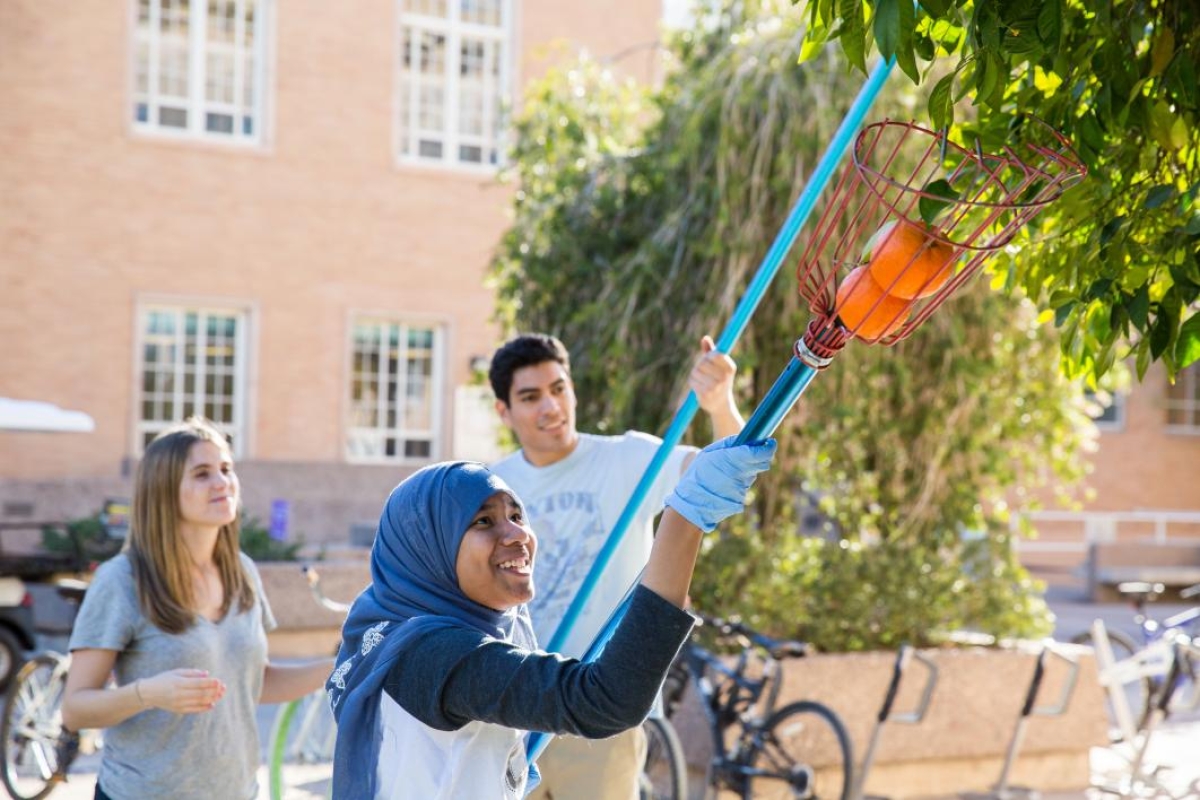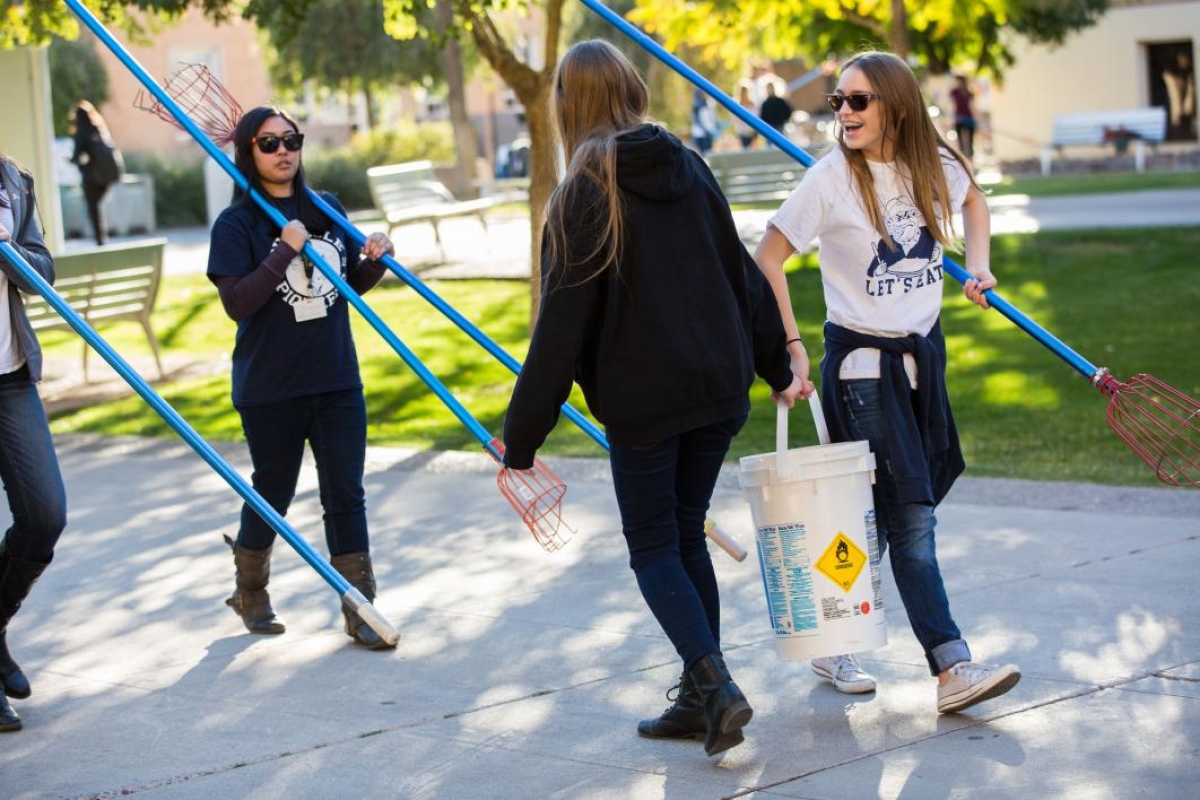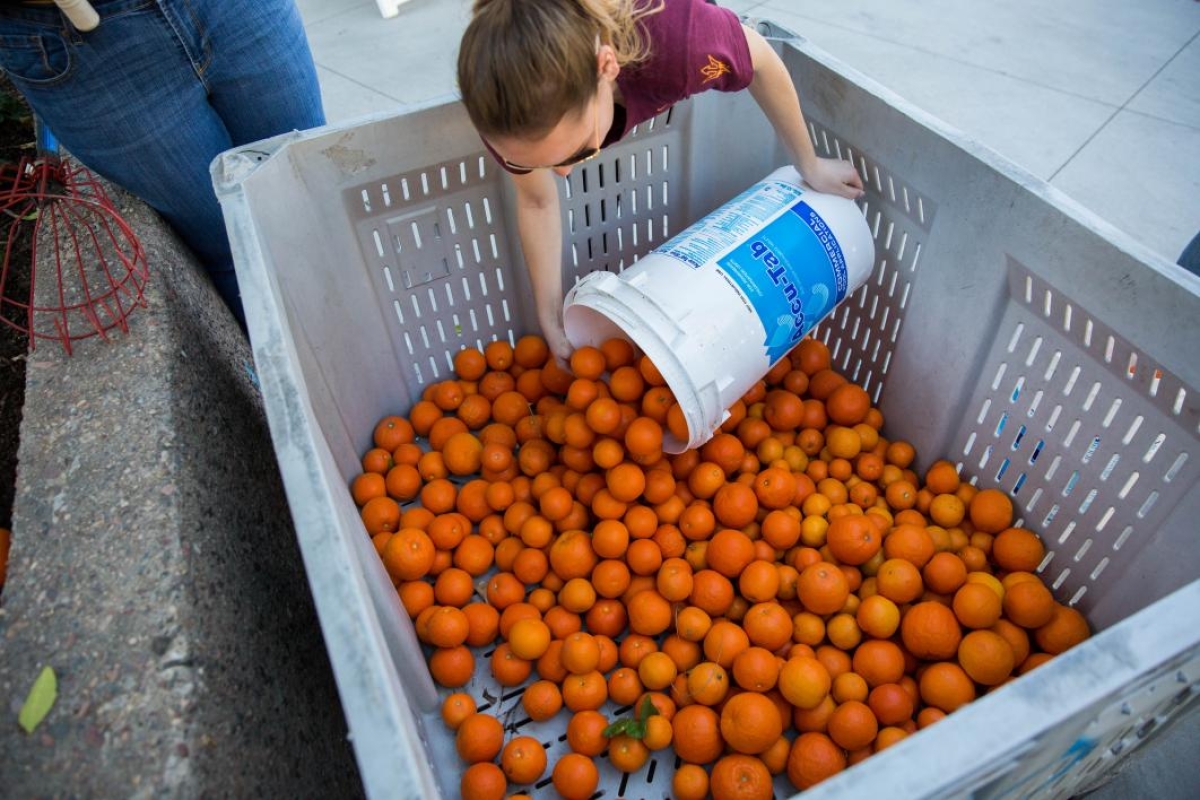ASU campus harvest puts the squeeze on sustainability
Learn more about the sour orange — including a recipe for the tart fruit — and volunteer for this week's annual harvest
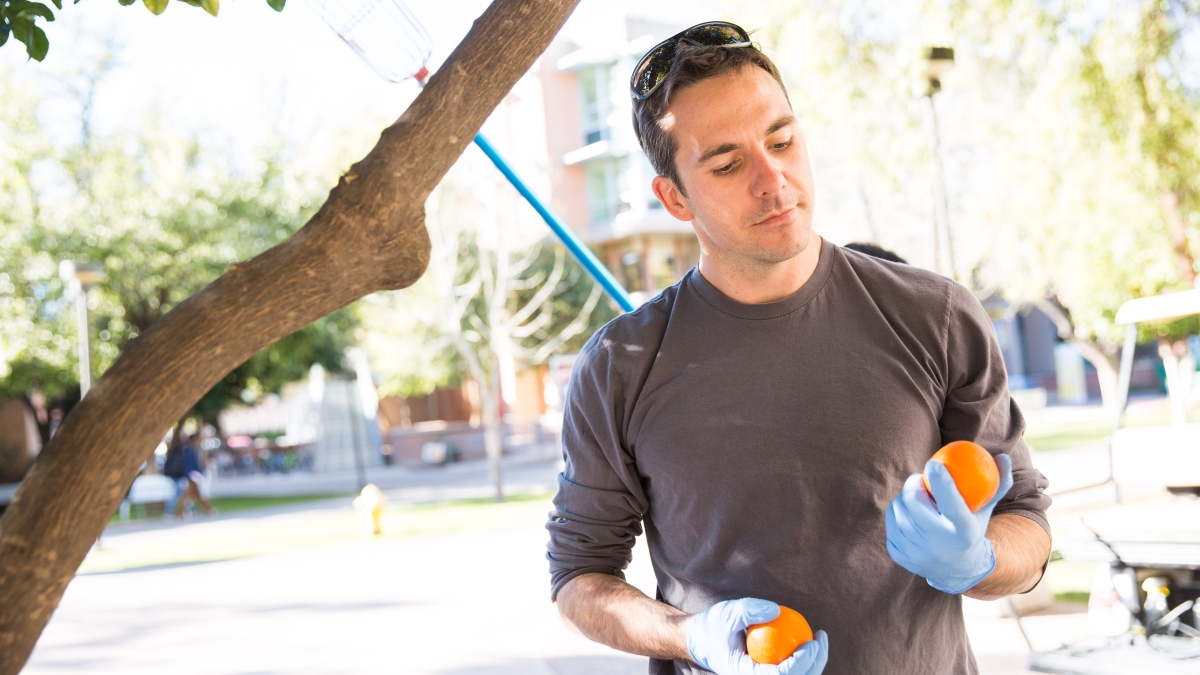
Unsuspecting students who hope to snag a sweet snack off one of Arizona State University’s many orange trees are in for a tart surprise: The trees on the Tempe campus bear sour oranges, or Sevilles.
So what’s the point of a sour orange? It turns out they have a long history and a bright future.
Originating in Southeast Asia, the oranges made their way into Arabia in the ninth century and eventually to the Spanish region of Seville, which gave them their present-day nameOther names include naranja ácida, naranji, melangolo, khatta and soap orange. To the English Tudors the oranges were “golden apples,” a luxury in British winters..
For 500 years the Seville orange — which is used in savory dishes (see recipe below) and marmalades — was the only orange found in Europe, and it was the first one introduced to the New World by the Spanish. It can still be found in Everglade hammocks today.
Eventually the sour orange made its way to Arizona and to the Tempe campus.
“We don’t know exactly when they were planted,” said ASU ground services program coordinator Deborah Thirkhill. “They were very popular in the ’50s and ’60s when they were planted all around the city of Phoenix and on campus.”
Today, the tart fruit is part of a sustainability initiative. Each year, Thirkhill and a small army of students and community volunteers take part in a harvest of 5 to 6 tons of oranges from all the trees on the Tempe campus. The harvest is a partnership between ASU Grounds Services, Aramark and Sun Orchard, which donates juicing of the sour oranges.
This year’s event is Feb. 3–5, and volunteers can sign up here.
The harvested oranges are turned into 400 gallons of juice, which Aramark chefs turn into innovative dishes and desserts available at Engrained at the Memorial Union.
Some of that juice is turned into DevilAde, a unique juice blend served in all ASU residence halls.
DevilAde “is really good, and we mix it with an agave nectar and other sweeteners,” said Krista Hicks, sustainability manager for Aramark ASU. “Then we make some delicious treats, kind of like a lemon bar — you can make a Seville orange bar, or we do Seville orange whoopie pies as well, which are my favorite.”
As a Sun Devil student herself, Hicks was one of those unsuspecting snackers when she mistook the bright orange for a sweet variety. She said the flavor reminded her of a lemon or a Sour Patch Kid.
For years the oranges were harvested by a Sunkist broker, and until 2008 they were used for marmalade and exported as far as Canada and the East Coast before the market bottomed out. The fruit spent two years being dumped into landfills before ASU sustainability practices found a new life for the unloved sour fruit. The Seville sour orange campus harvest eventually earned the 2015 President’s Award for Sustainability.
Thirkhill says she often fields questions from foreign students about why Americans don’t pick the valuable fruit.
“Every country seems to have a signature dish,” said Thirkhill. “That kind of dropped out of our culinary repertoire, but it’s coming back big time.”
For those who cannot make the spring harvest, there’s a fall date harvest open to volunteers. For more information or to volunteer for either harvest, contact Deborah Thirkhill at 480-268-4165. Follow the ASU Arboretum on Facebook and Twitter.
Top photo: Sustainability graduate student David Fought inspects oranges, deciding which can be collected and which will be composted, during last year's sour orange harvest on the Tempe campus. Photo by Deanna Dent/ASU Now
More Environment and sustainability
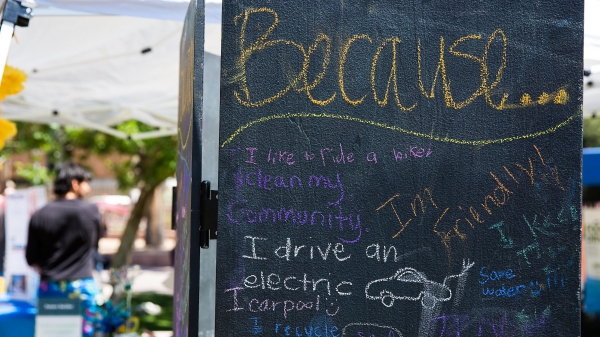
Earth Day celebrations focus on making our planet a priority
On April 22, Earth Day is celebrated across the country and in nearly 193 countries around the world. Arizona State University will be part of that celebration. The university has planned more…
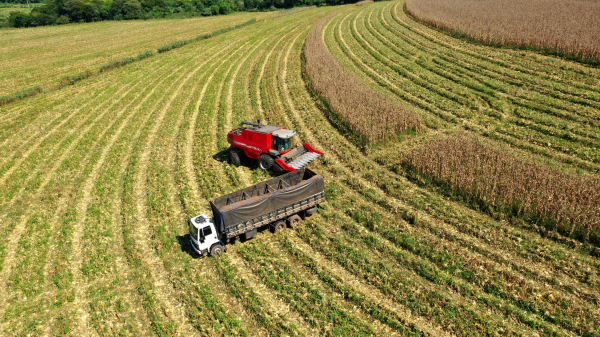
ASU scientist studies how bans, regulations on food technology affect consumer acceptance, perceptions
How do people process scientific developments with outside influences, warnings, biases and others’ opinions filtering in? That’s the question Caitlin Drummond Otten, environmental social scientist…

ASU team's research leads to new law protecting mobile-home dwellers
Arizona Gov. Katie Hobbs signed a law earlier this month that guarantees mobile-home owners’ right to install cooling measures, thanks in large part to the work of an Arizona State University team.…
